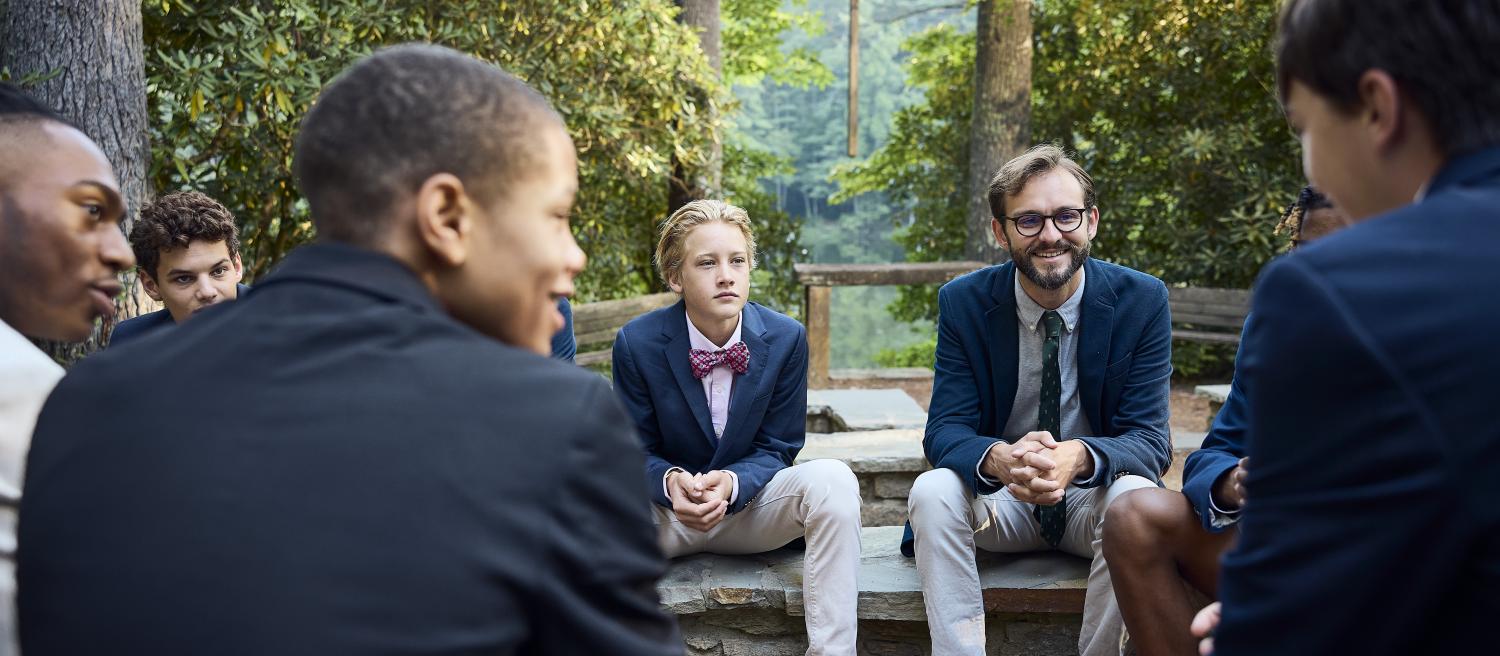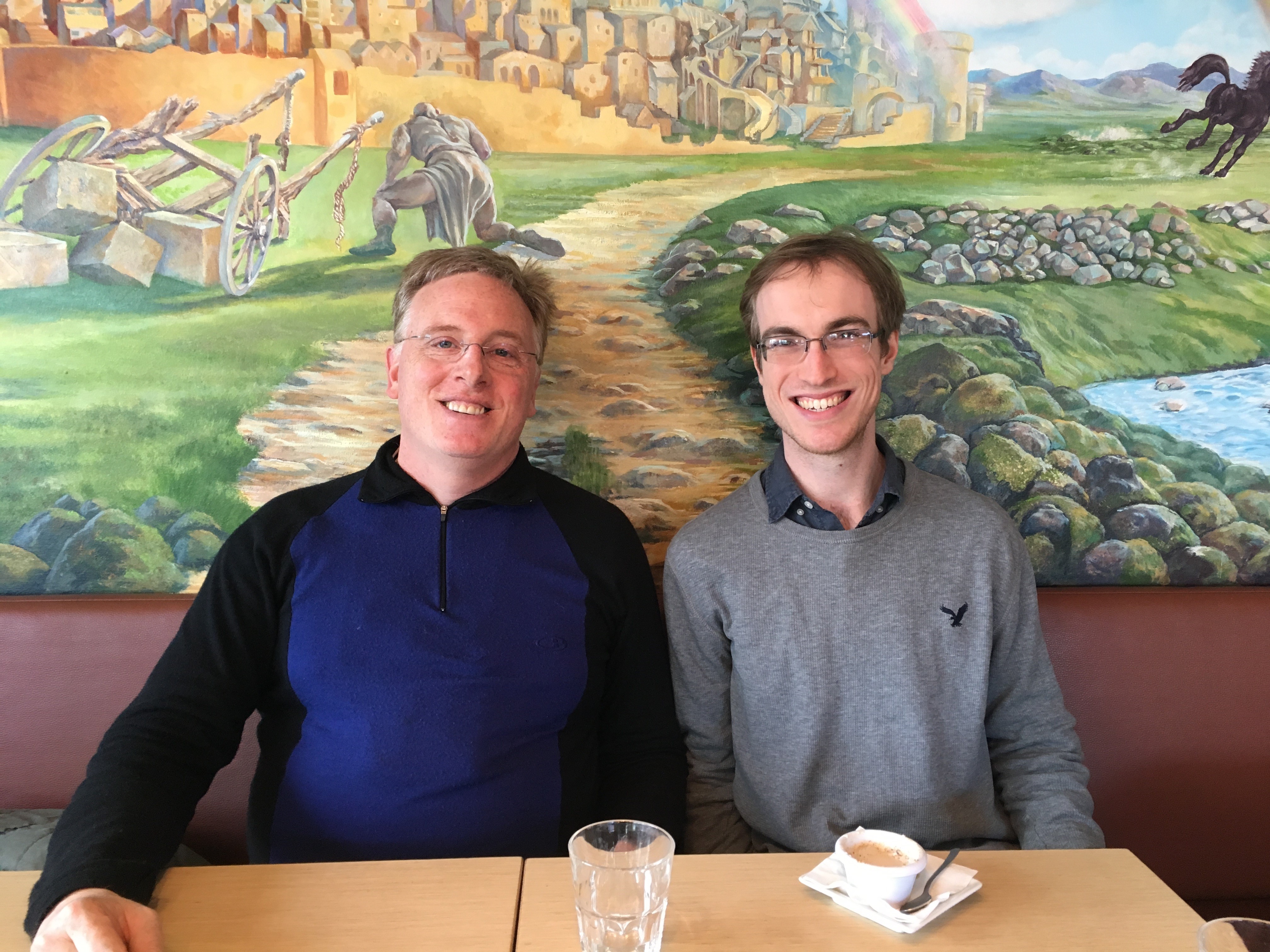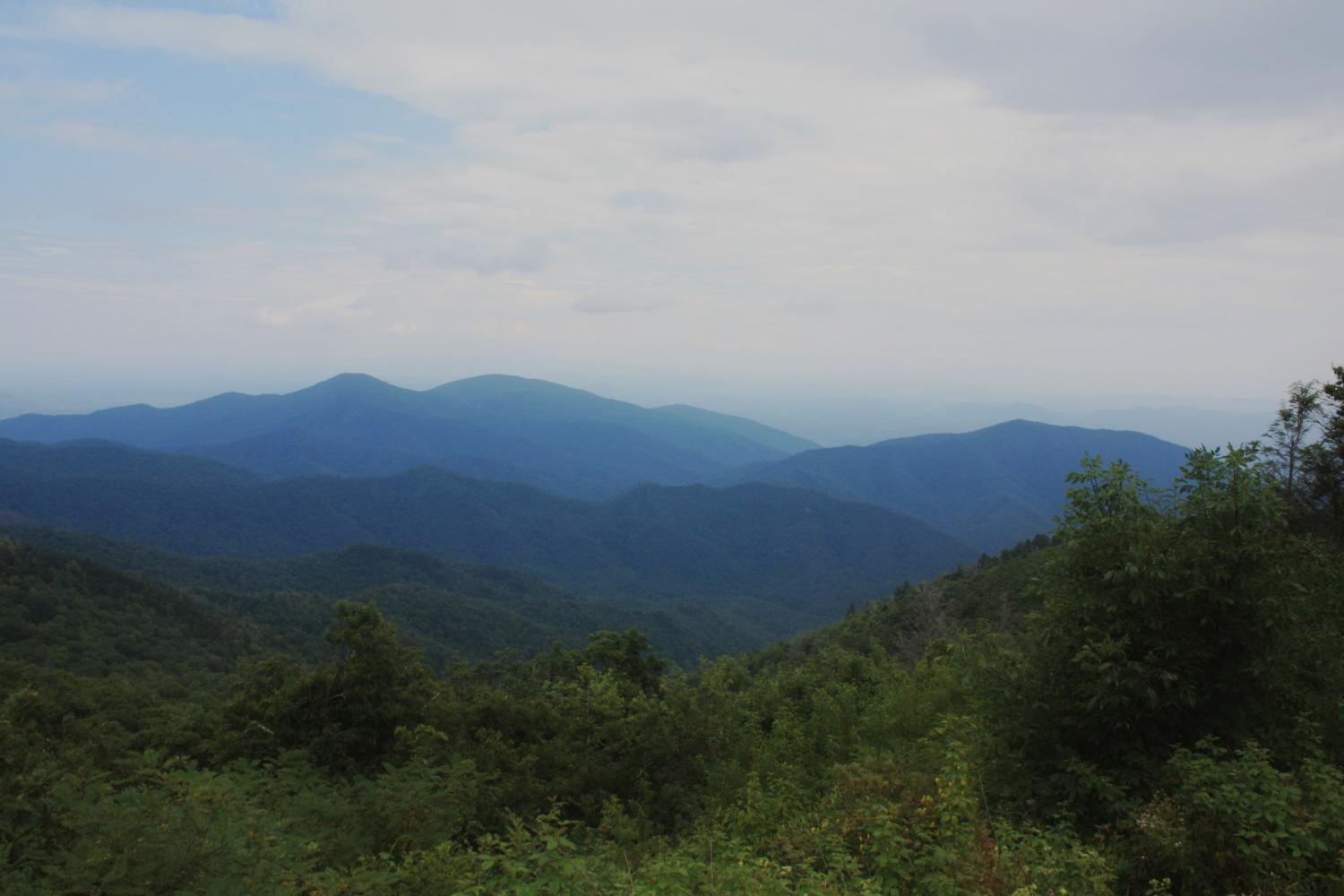Christ School Director of College Guidance Kirk Blackard, left, and Gabe Dunsmith '11 caught up in Iceland over Spring Break earlier this month.
Gabe Dunsmith '11 Living and Writing in Iceland
Former editor of school newspaper credits Christ School for his career
Gabe Dunsmith '11 is hardly a native of Iceland. He grew up on the outskirts of Christ School's campus. So how did Dunsmith end up making a home as a blogger and journalist in Europe's most sparsely populated country? This, and many other questions, are best answered by the former editor of the school paper. What is now known as The Stump was a publication called The Galax Leaf at the time Dunsmith was a Greenie.
Question: The most obvious question, I guess, is how did you end up in Iceland?
Answer: In 2014, while studying at Vassar College, I took a study trip to Iceland through the Center for Ecological Living and Learning (CELL), and spent three weeks hiking, planting trees, studying geothermal energy, and meeting political activists. Though I had only a cursory interest in Iceland before this trip, I quickly fell in love with the landscape, culture, and history of the place. It seemed simply that I belonged. After graduating from college in 2015, I moved several times within the U.S. and took various media industry jobs, but failed to find fulfilling work or a group of friends. Then, in the spring of 2017, I returned to Iceland for a three-month internship with the Reykjavík Grapevine, Iceland's premier English-language newspaper. Almost immediately, I found the friends and community I'd been seeking. I returned to Iceland in January 2018 to start a new blog, develop my writing, and learn a bit more about why I feel this kinship with such a remote place.
Question: Tell me about your blog, and journalism career? I understand that you have interviewed quite a few prominent figures. As a young journalist, how what has that experience been like you?
Answer: I'd always been interested in making a living as a writer, so upon graduating from Vassar I freelanced for outlets including the Guardian and Moyers & Co. while living in Seattle. In 2016, I then took a journalism fellowship at E&E News, an environmental policy publication based in Washington, D.C. During the course of that fellowship, I covered public health and chemicals regulations, and wrote a longform feature on a community in Michigan that still bears scars from DDT production in the early 20th century. When the opportunity arose to write in Iceland, though, I took it. At the Reykjavík Grapevine, my writing veered toward cultural and arts reporting, which was a welcome stylistic shift.
My new blog, titled "Nætur" – which means "nights" in Icelandic – represents yet another shift: it is primarily comprised of meditations on landscape and creative essays about the human relationship with the natural world. This kind of writing is brief when compared to news articles and also more creative; it allows me to experiment with my voice and relay personal experiences. The blog has developed organically, with each post usually based on an everyday scene – a mural, a trail by the oceanside, a mountain vista, a sunrise – each moment so small that I rarely know what I will say until I sit down at my computer. It's a completely different kind of storytelling.
However, I haven't abandoned journalism altogether. Included in "Nætur" is an interview series with various Icelandic artists, writers, thinkers and public figures. I began these interviews in order to introduce Icelandic culture to an English-speaking audience and to learn more myself about the creative process. (Creating art, I've realized, is still a fundamental way to relate to the world around us, and it's desperately needed.) Previously, while interning at the Grapevine, I'd talked to prominent politicians and political leaders, so it seemed an appropriate next step to bring interviews onto my blog.
It should be noted that Iceland has a population of only 340,000, and in such a small nation the culture around communication and media engagement is quite different than in the U.S. Last year, to arrange an interview with Katrín Jakobsdóttir – chairwoman of the Left-Green Movement, one of Iceland's political parties – I simply called her on her cell phone. Then I walked across the street to the parliamentary offices, rang the bell, and was promptly buzzed inside by Katrín herself. Today, Katrín is Iceland's prime minister. In Iceland, you never know whom you'll meet – and no one is really off-limits. If I could talk to the future prime minister, it became quite easy to email a landscape painter, a renowned folk musician, and the former mayor of Reykjavík.
It's been thrilling to chat with prominent figures in Iceland for the simple reason that I admire their work. Reykjavík isn't much larger than Asheville, so everyone's your neighbor, and people are generally very willing to talk about the things they love. As a young writer, it's also encouraging that I can bring my creative dreams to fruition in a place that nourishes me.
Question: Finally, what are your memories of attending Christ School? Did you know when you were a student here that you wanted to pursue this line of work?
Answer: My journalism career actually began at Christ School, as I edited the school's newspaper for several years under the direction of Mrs. Mary Dillon. Not only did I gain confidence as a writer, but I had complete freedom to pursue my interest in investigative reporting. So Christ School actually proved a perfect launchpad for a journalism career. In truth, I learned more about reporting during my H-block at Christ School than I did in my college journalism course and in my professional-level journalism fellowships because Mrs. Dillon understands what the news industry has unfortunately forgotten: that good journalism, at its core, is about telling a good story.






